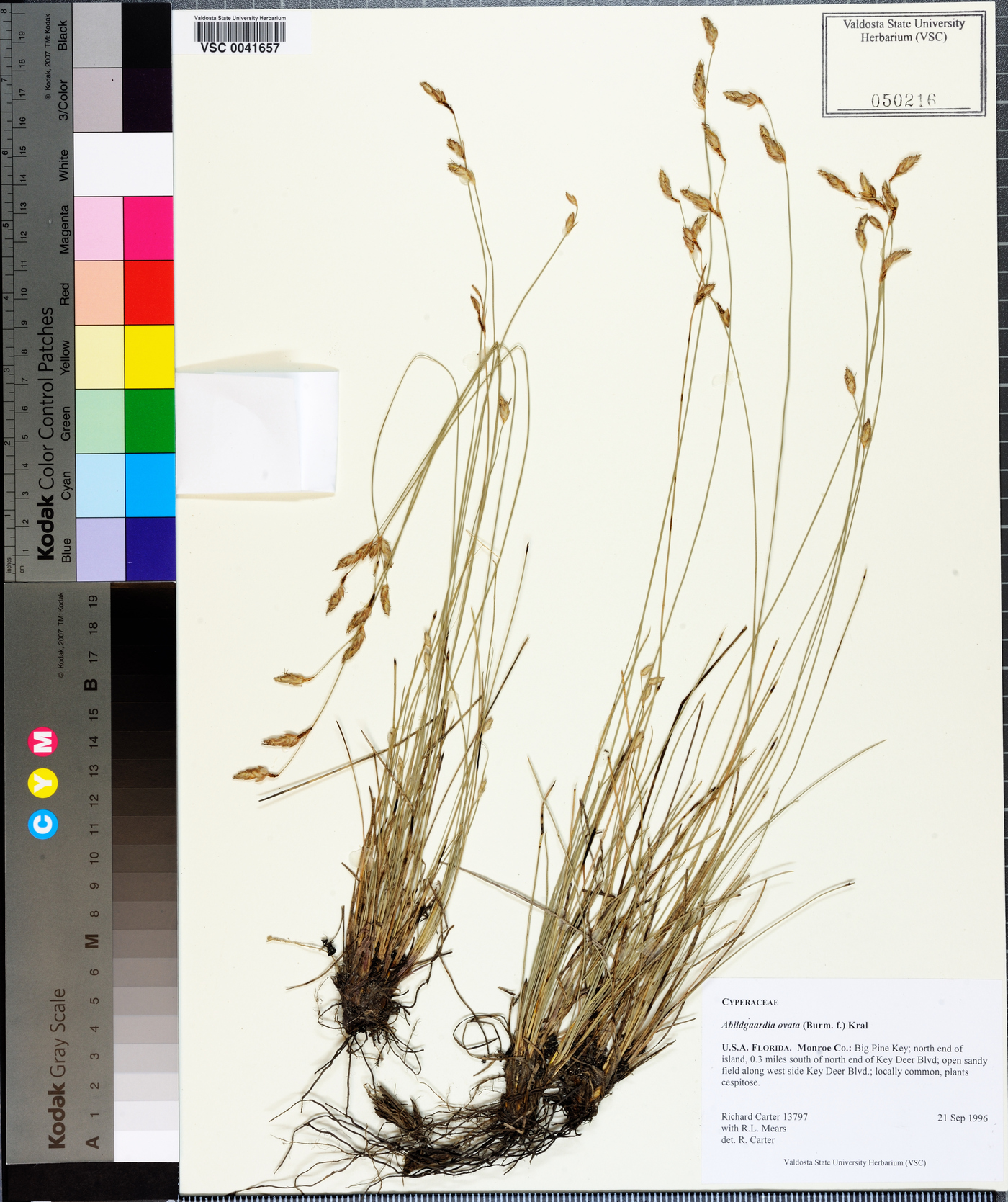
|
Family: Cyperaceae |
Herbs, perennial, cespitose, rhizomatous or not. Culms round. Leaves basal, polystichous; sheaths distally open, loose, ribbed; ligules absent; blades mostly filiform, compressed or lunate to semicircular in cross section, margins strongly involute. Inflorescences terminal, pseudoumbellate or capitate or solitary spikelet; spikelets 1-5; involucral bract 1, spreading to erect, scalelike or linear. Spikelets terminal, straw colored, ovoid to lance-ovoid, somewhat compressed laterally, whole spikelet flat or with torque; scales 10-30, all distichously arranged, each subtending flower on short pedicel-joint, proximal 1-2 empty. Flowers bisexual, protandrous; perianth absent; stamens 2-3; styles linear, base enlarged, 3-fid, deciduous in fruit. Achenes trigonous. Plants of Abildgaardia are hard based, mostly cespitose, sometimes thick rhizomatous, with wiry scapes and leaves, mostly glabrous. The spikelet as a whole is either flat or with torque; scales are keeled, the proximal one, two, or rarely three are bracteal, mostly cuspidate, the rest fertile, strongly imbricate. Flower filaments are slender, flat; anthers erect, oblong-linear, bilocular. After fertilization, the style disarticulates above the trigonous base, leaving an apiculus on the ovary. Achenes are obpyriform, stipitate, turgid, prominently three ribbed, apiculate, and warty. Abildgaardia is of debatable limits. Some authors have placed it in Fimbristylis or with Bulbostylis; current research discloses a significantly different embryology and anatomy.
|
This project was made possible in part by the Institute of Museum and Library Services [MG-70-19-0057-19].
Powered by Symbiota



